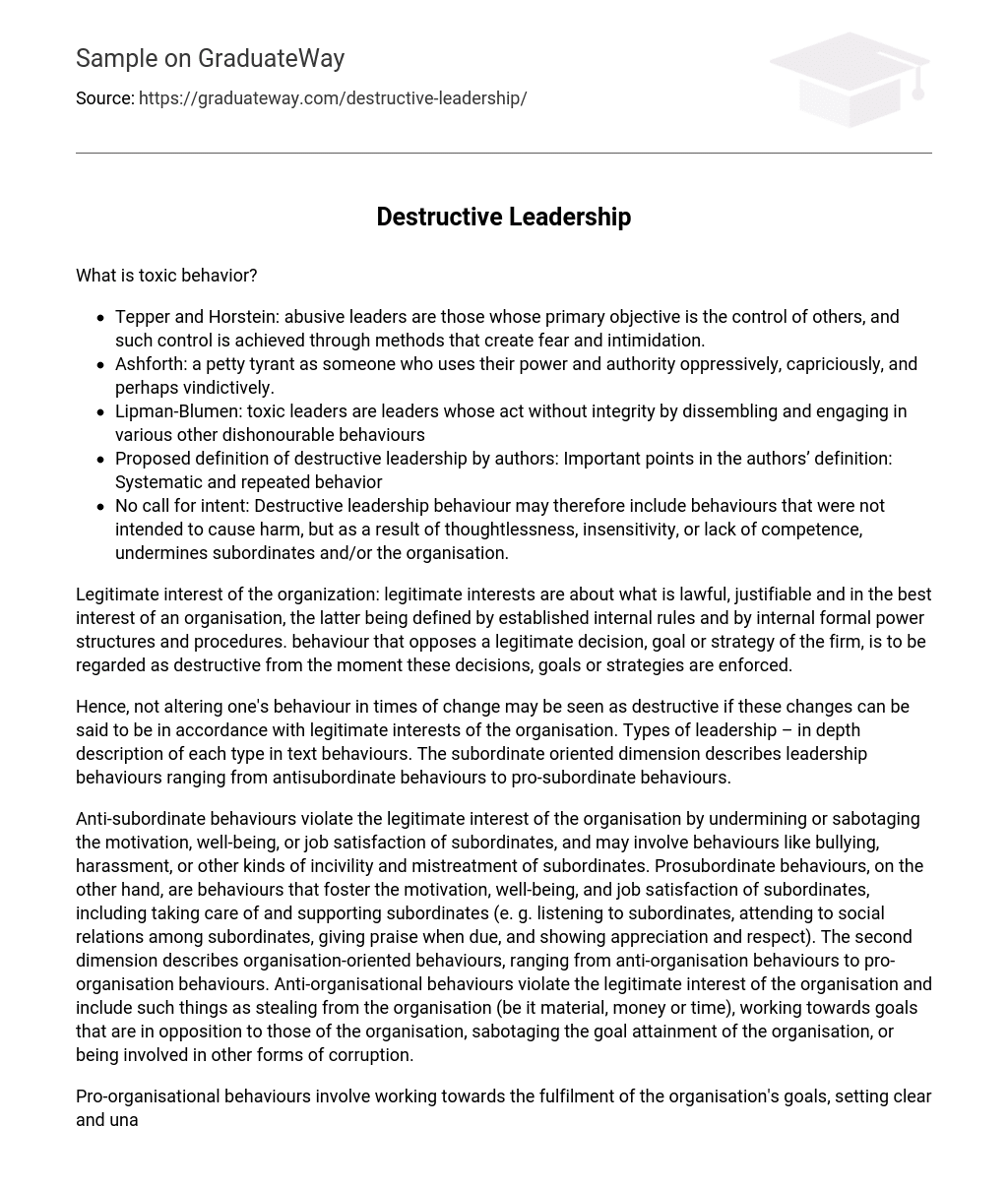What is toxic behavior?
- Tepper and Horstein: abusive leaders are those whose primary objective is the control of others, and such control is achieved through methods that create fear and intimidation.
- Ashforth: a petty tyrant as someone who uses their power and authority oppressively, capriciously, and perhaps vindictively.
- Lipman-Blumen: toxic leaders are leaders whose act without integrity by dissembling and engaging in various other dishonourable behaviours
- Proposed definition of destructive leadership by authors: Important points in the authors’ definition: Systematic and repeated behavior
- No call for intent: Destructive leadership behaviour may therefore include behaviours that were not intended to cause harm, but as a result of thoughtlessness, insensitivity, or lack of competence, undermines subordinates and/or the organisation.
Legitimate interest of the organization: legitimate interests are about what is lawful, justifiable and in the best interest of an organisation, the latter being defined by established internal rules and by internal formal power structures and procedures. behaviour that opposes a legitimate decision, goal or strategy of the firm, is to be regarded as destructive from the moment these decisions, goals or strategies are enforced.
Hence, not altering one’s behaviour in times of change may be seen as destructive if these changes can be said to be in accordance with legitimate interests of the organisation. Types of leadership – in depth description of each type in text behaviours. The subordinate oriented dimension describes leadership behaviours ranging from antisubordinate behaviours to pro-subordinate behaviours.
Anti-subordinate behaviours violate the legitimate interest of the organisation by undermining or sabotaging the motivation, well-being, or job satisfaction of subordinates, and may involve behaviours like bullying, harassment, or other kinds of incivility and mistreatment of subordinates. Prosubordinate behaviours, on the other hand, are behaviours that foster the motivation, well-being, and job satisfaction of subordinates, including taking care of and supporting subordinates (e. g. listening to subordinates, attending to social relations among subordinates, giving praise when due, and showing appreciation and respect). The second dimension describes organisation-oriented behaviours, ranging from anti-organisation behaviours to pro-organisation behaviours. Anti-organisational behaviours violate the legitimate interest of the organisation and include such things as stealing from the organisation (be it material, money or time), working towards goals that are in opposition to those of the organisation, sabotaging the goal attainment of the organisation, or being involved in other forms of corruption.
Pro-organisational behaviours involve working towards the fulfilment of the organisation’s goals, setting clear and unambiguous objectives, making or supporting strategic decisions, and implementing organisational change, among other things. Furthermore, leaders’ behaviours may be described as more or less constructive (pro-behaviours) and more or less destructive (anti-behaviours) on each of the two dimensions. Pro-surbordinate leadership Constructive Leadership Supportive-Disloyal Leadership Anti-organization leadership Pro-organization behaviour Tyrannical Leadership Derailed leadership Anti-surbordinate behaviour





